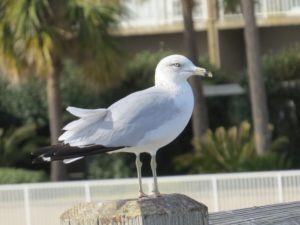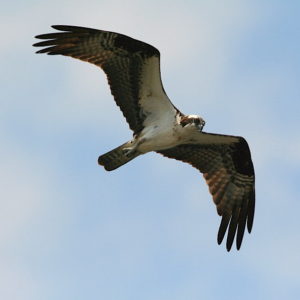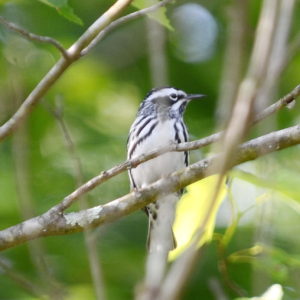Jordan Lake Christmas Bird Count
Author: Norm Budnitz
The Jordan Lake Christmas Bird Count was held on December 31, 2017. The temperature stayed below freezing all day (27-30 degrees F), which wouldn’t have been too bad if it hadn’t also been a bit windy (5-10 mph). But at least it did not rain like last year. There was some ice coverage on non-flowing waters (perhaps 10%). We reported 90 species (plus 2 others seen in the count period but not on count day) and counted 48,015 individual birds. Both the species count and the individual bird count were very close to our 10-year averages of 91.9 and 54,000, respectively. The dominant factor, as usual, was the vast number of Ring-billed Gulls that roost on the lake, estimated to be 33,000 this year by Tracy Feldman and Eddie Owens.

Ring-billed Gull – Photograph by Dennis Forsythe
A note about the Ring-billed Gull count: Estimating the gulls that roost in the central part of the lake is not an easy task. Most of the gulls spend the daylight hours at the South Wake County Landfill and then fly west to gather and roost for the night in the main part of the lake between Ebenezer and Vista Points. Before they take off in the morning, it is possible to scope them from Ebenezer with the sun at your back. One technique is to count a ‘scopeful’ of gulls and then pan across the whole flock and estimate how many ‘scopefuls’ there are. With heat distortion, gulls being in front of other gulls, and gulls just plain moving around, there is room for a lot of error. Therefore, the 33,000 reported really should be plus or minus several thousand.
As a result of this potential for error, the 100 gulls here or there reported by other parties are swamped out by the main flock. So, I subtract those other numbers when I make the final report.
Scott Winton and Mark River recently published an article addressing the nutrient transfer by the gulls from the landfill to the lake, and I recently posted a blog about this topic called “Gull Poop” on the New Hope Audubon website.
Fifty-eight birders (10-year average: 55) in 22 parties (average: 23) put in 109 party-hours (average: 123). Leaving out the gulls, that’s approximately 120 birds per party-hour, very close to our 10-year average of 125 birds per party-hour. (Including gulls, those numbers would be 440 and 434 b/p-h, respectively. This shows how the gulls, counted in a half hour or so, really skew the data.) So, despite the wind chill, our numbers were fairly typical.
We had several new high species counts:
• Northern Shovelers—37 (previous high was 20 last year)—Peg O’Neil-Ross found a herd of 36!
• Redheads—30 (5 in 2011)
• Red-breasted Mergansers—27 (14 in 1984!)
• Yellow-bellied Sapsuckers—77 (tied the old record from 2014)
• Northern Cardinals—423 (squeaked past the 420 from 2015)
The only miss of a regularly occurring species was Wilson’s Snipe, though Jim Capel, Mark Kosiewski, and Tommy Richey reported its close relative, an American Woodcock.

Osprey – Photograph by Bill Majoros
Observers also found some relatively unusual species:
• Canvasbacks (4)—Loren Hintz and Margaret Vimmerstedt
• Redheads (30)—Loren Hintz and Margaret Vimmerstedt and, independently, Brian Bockhahn
• Greater Scaup (1)—Brian Bockhahn
• Osprey (1)—Josh and Sterling Southern
• Lesser Black-backed Gulls (4)—Brian Bockhahn
• Blue-gray Gnatcatcher (1)—Loren Hintz and Margaret Vimmerstedt
• Black-and-white Warbler (1)—Brian Bockhahn

Black-and-white Warbler – Photograph by Norm Budnitz
We had 58 birders in 22 parties. We put in 109 party hours (80 on foot, 29 by car), 213 party miles (72 on foot, 141 by car), and 3 hours nocturnal birding.
Two years ago, we suffered from extensive rain events prior to our count, resulting in a very high lake level—i.e., too much water on the ground. Last year, it was too much water falling out of the sky on the day of the count. This year it was just plain cold. Next year, maybe it will be pleasant, with balmy temperatures. Or maybe not!
« Back to All Press